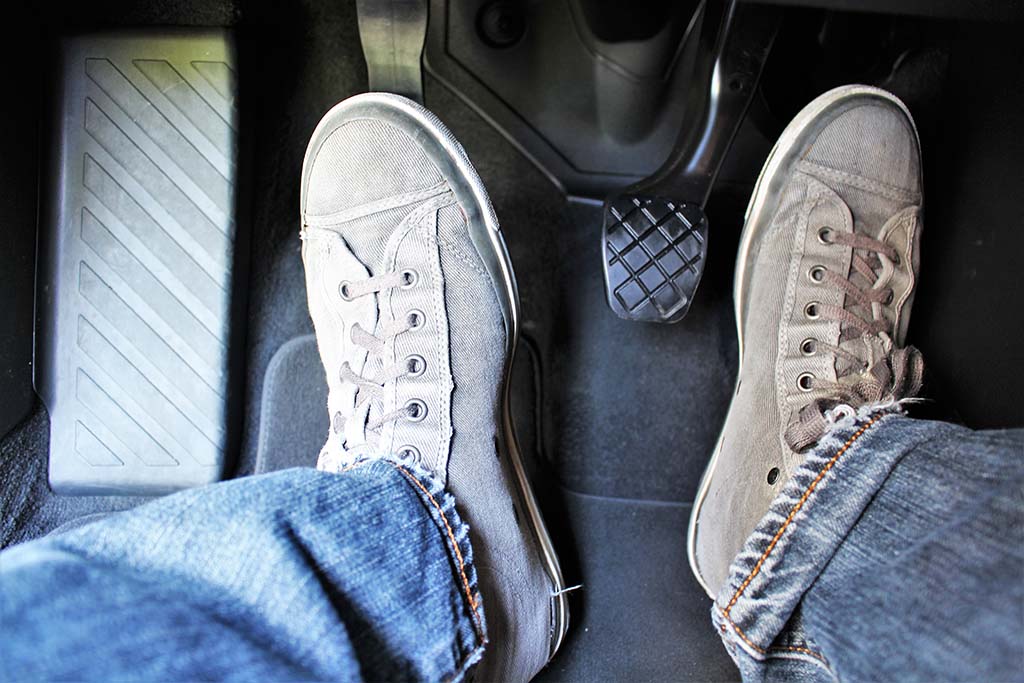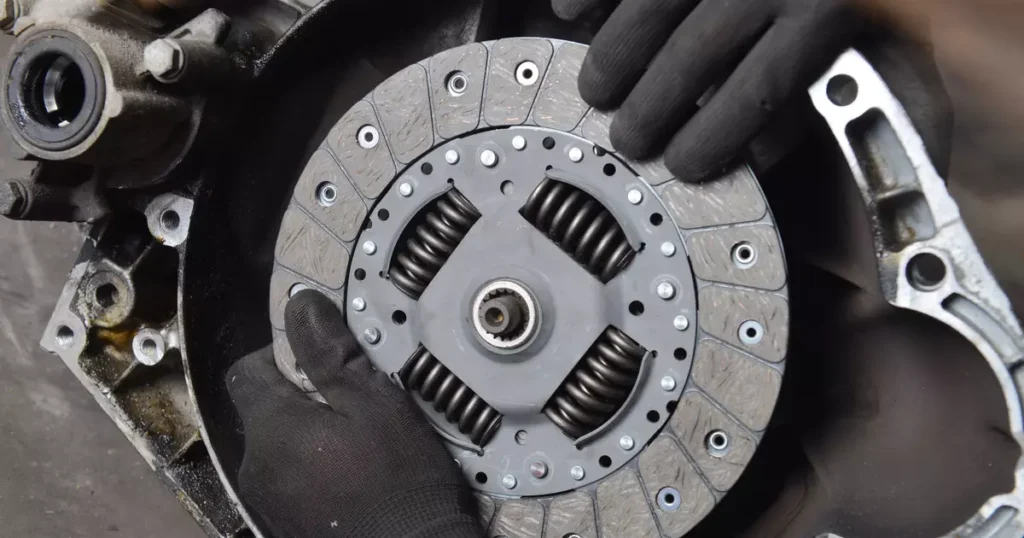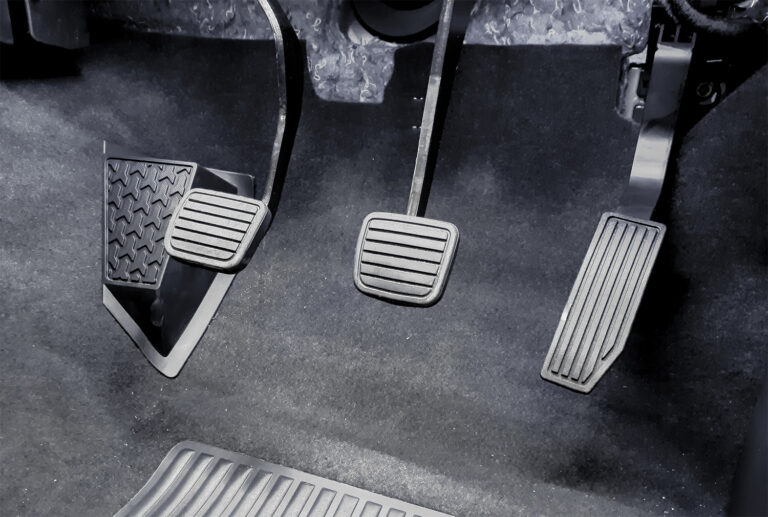The inability to shift gears due to a lack of clutch pressure can result from various issues within the vehicle’s clutch system. Common causes include low or empty clutch fluid, leaks in the clutch system components such as the master or slave cylinder, worn-out clutch parts like the disc or pressure plate, or problems with the clutch cable (if applicable).
Additionally, air bubbles in the hydraulic line or misalignment/adjustment problems with the clutch linkage can lead to a loss of pressure and difficulty in engaging gears.
To resolve these issues, it’s recommended to inspect the clutch fluid level, check for leaks, examine the condition of clutch components, bleed the clutch system if needed, and ensure correct adjustment of clutch linkage. Seeking assistance from a professional mechanic might be necessary for accurate diagnosis and repair of the problem if you’re unfamiliar with automotive systems.
What are the symptoms of clutch issues?

These symptoms collectively point towards potential problems within the clutch system, which require careful inspection and diagnosis to identify the specific issue(s) affecting clutch pressure and gear engagement.
Inability to engage gears
Grinding or Resistance: When trying to shift gears, you may experience resistance or grinding noises, indicating trouble engaging the gears properly. This often occurs because the clutch isn’t disengaging fully.
Slipping Gears: Gears might slip out of place or refuse to engage entirely, leading to unexpected shifts or the inability to stay in gear. This issue is particularly noticeable when trying to accelerate or maintain speed.
Stuck in Neutral: The gearbox might get stuck in neutral, preventing the vehicle from moving into any gear. This can stem from clutch-related problems or transmission issues.
Lack of pressure in the clutch pedal
Soft or Spongy Pedal: A clutch pedal that feels soft, spongy, or lacking resistance when pressed may signal issues with hydraulic pressure in the clutch system. This lack of pressure can make shifting gears challenging or impossible.
Pedal Stays on the Floor: Sometimes, the clutch pedal might stick to the floor after being depressed, indicating a loss of hydraulic pressure. This can result from leaks or a failing master or slave cylinder.
Pedal Engagement Height: A noticeable change in the engagement height of the clutch pedal higher or lower than usual can suggest problems within the hydraulic system or clutch components.
Strange noises or sensations while pressing the clutch
Squealing or Chirping Sounds: When pressing the clutch pedal, unusual squealing or chirping noises might occur, indicating worn-out release bearings or pilot bushings.
Clunking or Clicking: Clutch-related issues can manifest as clunking or clicking sounds while engaging or disengaging the clutch, hinting at potential problems within the clutch linkage or worn-out components.
Vibrations or Shaking: Any vibrations, shaking, or juddering sensations felt through the clutch pedal can signify issues with the clutch plate, flywheel, or other clutch components being worn or misaligned.
How to diagnose clutch pressure and gear engagement problems?
Addressing these potential causes involves careful inspection, diagnosis, and appropriate repairs or replacements to restore clutch pressure and gear engagement functionality.
Low or depleted clutch fluid
How to check clutch fluid levels
Locate the clutch fluid reservoir in the engine bay, usually near the brake master cylinder.
Ensure the vehicle is on a level surface.
Unscrew the reservoir cap and visually inspect the fluid level against the markings on the reservoir. Use the recommended fluid type for top-ups.
Possible leaks in the hydraulic system
- Look for signs of fluid leakage around the clutch master cylinder, slave cylinder, hoses, or connections.
- Check for wetness, stains, or pooling of fluid beneath the vehicle.
- Loss of fluid without an apparent reason can indicate a leak in the hydraulic system, requiring thorough inspection and repairs.
Worn or damaged clutch master cylinder
Signs of a failing master cylinder
- Spongy or soft clutch pedal feel.
- Visible fluid leakage around the master cylinder.
- Reduced clutch engagement or the pedal staying on the floor after being depressed.
- Difficulty shifting gears or an inability to disengage the clutch.
Repair or replacement options
- Repairing a master cylinder involves replacing seals or rebuilding the cylinder if the damage is minimal.
- Replacement is often recommended for extensively worn or damaged master cylinders to ensure optimal performance and safety.
Faulty clutch slave cylinder
The slave cylinder is typically located on the transmission housing and is responsible for translating hydraulic pressure into mechanical force to actuate the clutch release mechanism.
Symptoms of a failing slave cylinder
- Leakage of hydraulic fluid around the slave cylinder.
- Inability to disengage the clutch or a soft clutch pedal.
- Reduced or inconsistent clutch engagement while shifting gears.
Clutch linkage or cable issues
Inspect the clutch linkage components or cable for signs of wear, fraying, or damage.
Check for proper adjustment and ensure there’s no excessive play in the linkage.
Adjustment or replacement procedures:
Adjustment involves tightening or readjusting the clutch linkage to restore proper functionality. Replacement may be necessary if components are severely worn or damaged, ensuring optimal clutch operation.
What troubleshooting steps and solutions address clutch malfunctions?

When troubleshooting clutch issues, several steps can help diagnose and resolve problems affecting clutch pressure and gear engagement. Checking and refilling clutch fluid involves locating the reservoir in the engine bay, ensuring the vehicle is on a level surface, and topping up the fluid to the recommended level using the specified fluid type.
Additionally, inspecting for leaks in the hydraulic system requires a thorough visual examination around the master cylinder, slave cylinder, hoses, and connections. Any signs of fluid leakage or wetness beneath the vehicle suggest potential leaks that need to be addressed promptly to maintain hydraulic pressure.
Moreover, testing and diagnosing the clutch master cylinder involve assessing the pedal feel whether it’s spongy, soft, or if it sticks to the floor when depressed. Pressure testing using a gauge to compare measured pressure against manufacturer specifications helps determine the master cylinder’s functionality.
Similarly, assessing the condition of the clutch slave cylinder involves visual inspections for leaks or damage and functionality tests to ensure proper engagement when actuating the clutch pedal.
Furthermore, examining the clutch linkage or cable for issues includes visually inspecting these components for wear, fraying, or damage. Proper lubrication and adjustment to manufacturer specifications are crucial.
Finally, addressing identified problems often involves repair or replacement options. Minor issues such as leaks or worn seals might be resolved through repairs, while severely damaged or extensively worn components may require complete replacement. It’s essential to use high-quality replacement parts compatible with the vehicle’s specifications for effective resolution.
FAQ’s
Why does your car go into gear without pressing the clutch?
Your vehicle may have a failing clutch master cylinder or a problem with the clutch linkage, causing incomplete disengagement of the clutch.
Why is your clutch pedal on the floor with no pressure?
A clutch pedal on the floor with no pressure often indicates a potential issue with the hydraulic system, such as a leak or a failing master or slave cylinder.
Why is your clutch not grabbing gears?
A clutch failing to engage properly might be due to worn-out clutch components, such as a slipping clutch disc or pressure plate, hindering gear engagement.
What are the first signs of clutch failure?
The initial signs of clutch failure often include a slipping clutch, difficulty shifting gears, a burning smell, or unusual noises while operating the clutch.
Why is the gear not shifting?
Gear shifting problems can arise from various factors, including low transmission fluid, clutch linkage issues, or problems with the transmission itself, such as worn synchros or gears.
Can a clutch fail suddenly?
While it’s uncommon, a clutch can fail suddenly due to severe damage or component failure. Typically, signs of wear or issues precede clutch failure.
Final Words
Understanding the symptoms of clutch issues like difficulty engaging gears, a soft clutch pedal, or strange noises during clutch operation is crucial. These signs may indicate problems like low clutch fluid, leaks in the hydraulic system, or worn-out components such as the master or slave cylinder.
Troubleshooting steps involve checking fluid levels, inspecting for leaks, testing the master and slave cylinders, and examining the clutch linkage.
Repair options include fixing minor issues or replacing extensively damaged parts with suitable replacements. Regular maintenance and prompt attention to clutch problems are key to ensuring smooth gear engagement and maintaining a properly functioning clutch system in vehicles.

